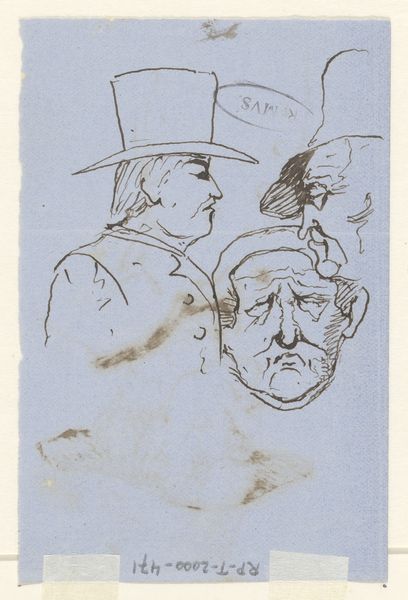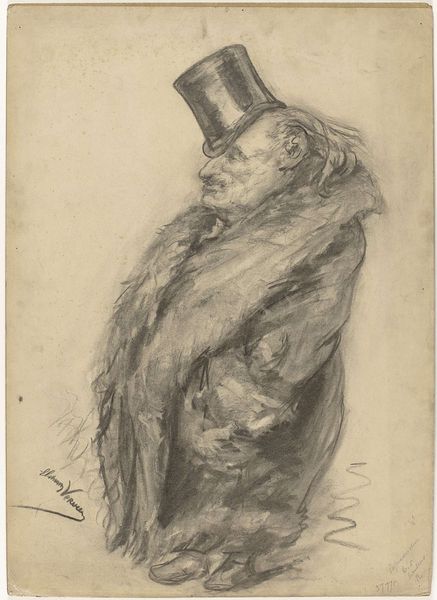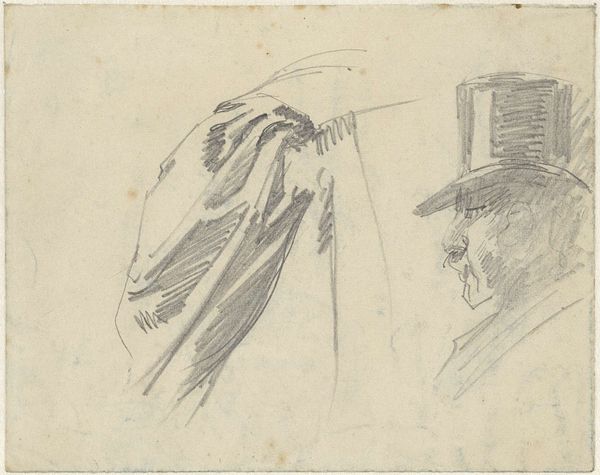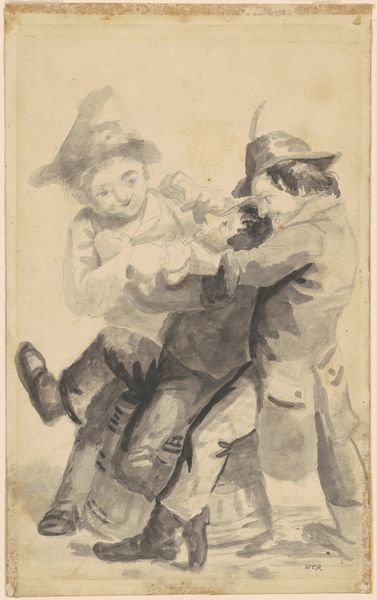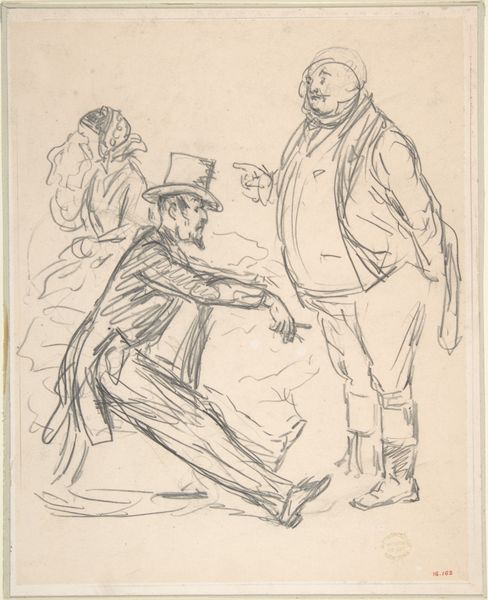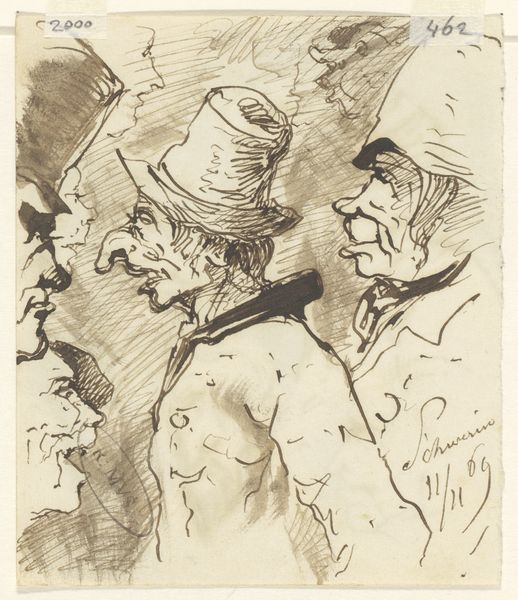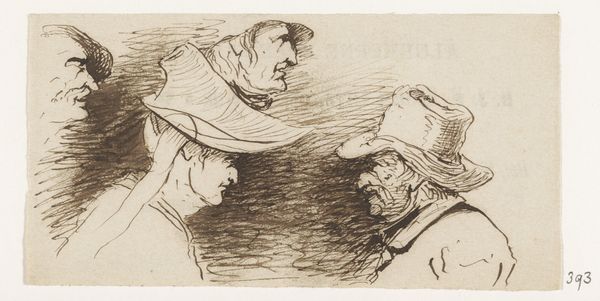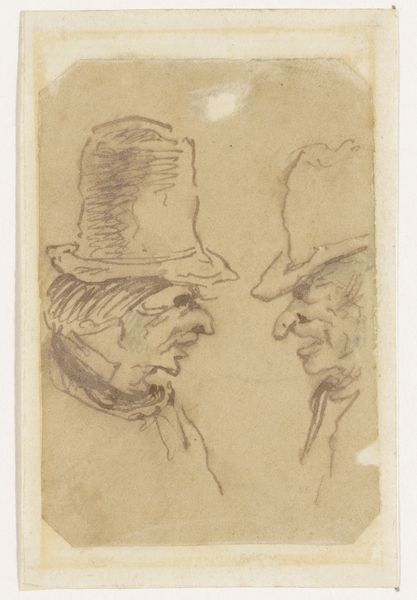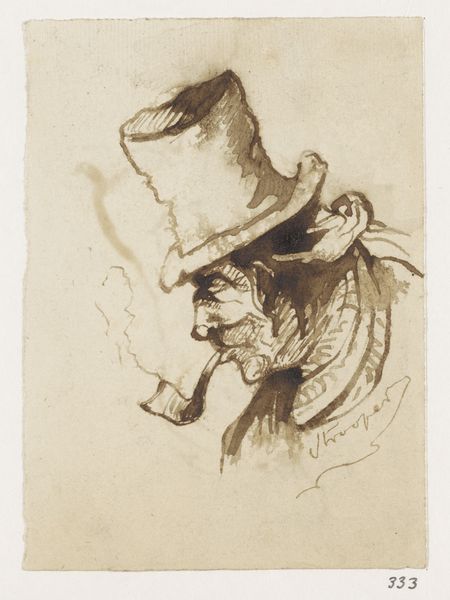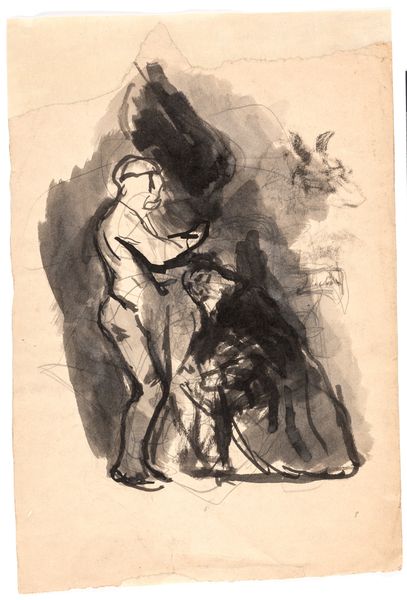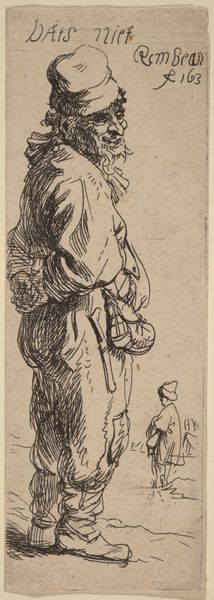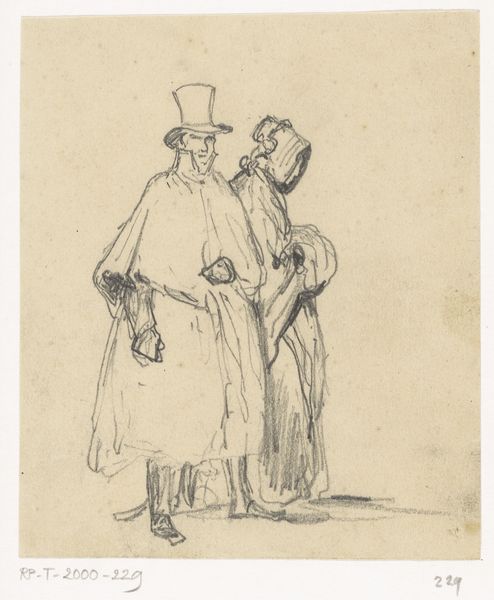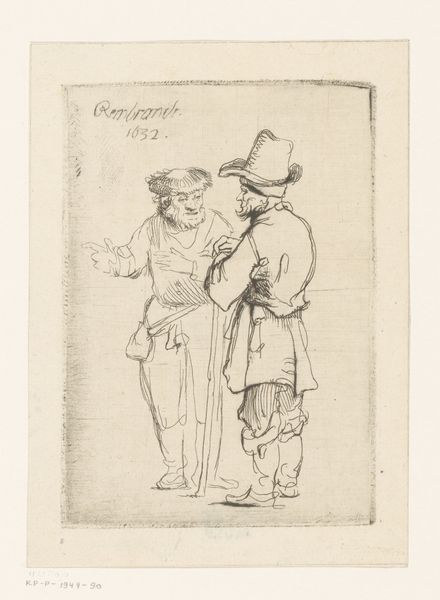
Karikatuurportret van Jozef Israels en Salomon van Witsen 1850 - 1899
0:00
0:00
Dimensions: height 760 mm, width 628 mm
Copyright: Rijks Museum: Open Domain
Curator: Here we have a caricature portrait rendered in charcoal, titled "Karikatuurportret van Jozef Israels en Salomon van Witsen" created sometime between 1850 and 1899 by Elchanon Verveer. The piece resides here at the Rijksmuseum. Editor: Immediately, I’m struck by how it feels like an observation of social dynamics from that era. There’s an almost palpable tension or unspoken dialogue happening between the figures. Curator: Yes, the artist utilizes caricature to great effect here. Notice how the subjects are slightly exaggerated, drawing on a well established tradition where distortion is deployed to offer deeper insights into the symbolic character of the figures depicted. One figure gestures expressively while the other maintains a composed presence. The symbols hint at possibly contradictory world views held by each. Editor: I think what interests me most is how their positions reflect their perceived status or perhaps the dynamic between the two figures in the art world at the time. Is there any way to connect this work to broader conversations about the artistic establishment and representation? Curator: It's interesting that you read their body language and relative positions as a reflection of societal positioning. I'd venture that is definitely part of the symbolic intent, yes, because in the Dutch artistic tradition, portraits served as vital declarations of self and, indeed, societal value. Furthermore, caricature allowed the artist to make clear and immediate their views. The clothing worn, of course, is also doing its work here too, denoting certain class affiliations and social positions. The composition of these visual queues is quite insightful. Editor: The visible brushstrokes almost convey a sense of unease to the portrait; one could perhaps ask whether this caricature pokes fun at or subverts the dominant cultural discourse of the time by magnifying it? Curator: Very possibly, the artistic intent isn't always obvious through art historical distance but understanding how images can transmit ideas and emotions regardless of intent or time through such universal symbols is often enough, wouldn't you say? Editor: Absolutely, even with incomplete details, one can grasp some intention; however, I would also say we shouldn't discount potential modern interpretations that view such works as possible sites for socio-political reflections that resonate today. Curator: Well, it’s been fascinating to unpack some layers within this sketch! I’m now feeling a lot more in tune with both figures and also the hand of the artist. Editor: I agree. It highlights the ability of art to both reflect and shape the perceptions of ourselves and of the era from which it originates.
Comments
No comments
Be the first to comment and join the conversation on the ultimate creative platform.
